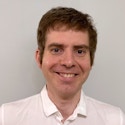Simons Investigators
- Email:
[email protected]
Simons Investigators are outstanding theoretical scientists who receive a stable base of research support from the foundation, enabling them to undertake the long-term study of fundamental questions.
The Investigator program has been discontinued.
Simons Investigators in Mathematics, Physics, Astrophysics and Computer Science
The intent of the Simons Investigators in Mathematics, Physics, Astrophysics and Computer Science programs is to support outstanding theoretical scientists in their most productive years, when they are establishing creative new research directions, providing leadership to the field and effectively mentoring junior scientists. A Simons Investigator is appointed for an initial period of five years. Renewal for an additional five years is contingent upon the evaluation of scientific impact of the Investigator.
Simons Investigators in Mathematical Modeling of Living Systems (MMLS)
This program aims to help the research careers of outstanding scientists working on mathematical and theoretical approaches to topics in the life sciences. A Simons Investigator in MMLS is appointed for five years.
Math+X Investigators
This program encourages novel collaborations between mathematics and other fields in science or engineering by providing funds to professors to establish programs at the interface between mathematics and other fields of science or engineering. A Math+X Investigator is appointed for an initial period of five years. Renewal for an additional five years is contingent upon the evaluation of scientific impact of the Investigator.
- Email:
[email protected]
- Email:
[email protected]
2020
Alexei Borodin, Ph.D.
Massachusetts Institute of Technology
Alexei Borodin is a professor of mathematics at the Massachusetts Institute of Technology. He studies problems on the interface of representation theory and probability that link to combinatorics, random matrix theory and integrable systems. His most recent work carries over the ideas and techniques of the theory of symmetric functions to solvable lattice models of statistical physics.
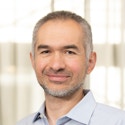
Ciprian Manolescu, Ph.D.
Stanford University
Ciprian Manolescu works in low-dimensional topology and gauge theory. His research is centered on constructing new versions of Floer homology and applying them to questions in topology. With collaborators, he showed that many Floer-theoretic invariants are algorithmically computable. He also developed a new variant of Seiberg-Witten Floer homology, which he used to prove the existence of non-triangulable manifolds in high dimensions.
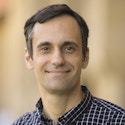
Fernando Codá Marques, Ph.D.
Princeton University
Fernando Codá Marques is a geometer. His recent work, in collaboration with André Neves, developed a full Morse theory for the area functional in closed Riemannian manifolds. The ideas introduced by them have revitalized the subject, leading to the discovery that closed minimal surfaces are ubiquitous in these spaces.
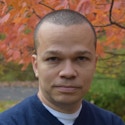
Zhiwei Yun, Ph.D.
Massachusetts Institute of Technology
Zhiwei Yun works at the intersection of representation theory, algebraic geometry and number theory. He uses ideas and techniques from geometry to solve problems in group representations and number theory. He has constructed the first examples of motives of type E_7 and E_8 and solved a related inverse Galois problem. In joint work with Wei Zhang, he has given a geometric interpretation of higher derivatives of L-functions for function fields.
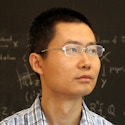
Aashish Clerk, Ph.D.
University of Chicago
Aashish Clerk is a theoretical physicist working at the intersection of condensed matter, quantum optics and quantum information theory. His research focuses on driven-dissipative quantum phenomena and is motivated both by fundamental questions as well as potential applications in quantum technologies. Clerk is best known for his works on quantum optomechanical systems, on quantum amplification and measurement, and on dissipation engineering to realize unidirectional interactions. Clerk’s current work spans topics ranging from quantum transduction and quantum control to the study of new kinds of driven-dissipative bosonic topological phases and non-Hermitian quantum phenomena.

Claudia de Rham, Ph.D.
Imperial College London
Claudia de Rham works at the interface between gravity, particle physics and cosmology. She develops and tests new models to tackle fundamental questions of physics, such as the origin and evolution of the Universe, its accelerated expansion and the nature of gravity. She is known for uncovering the first theoretical framework where the graviton could carry a mass with far-reaching implications for cosmology and gravity. Recently, de Rham has focused on developing consistent effective field theory descriptions of our Universe that may enjoy a standard high-energy completion and on determining new classes of observational signatures.
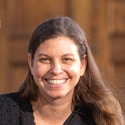
Mohammad Hafezi, Ph.D.
University of Maryland, College Park
Mohammad Hafezi is known for his contributions in a number of works to synthesize and characterize quantum many-body and topological physics beyond electronic systems. Examples include cold atoms, superconducting qubits and photons, where his works on the last one have helped found the field of topological photonics. Some of his current interests include efficient characterization and probing of many-body properties in quantum simulators. His research group is interested in exploring the application of quantum optics to create, probe and manipulate correlated electron systems.
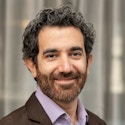
Leonardo Rastelli, Ph.D.
Stony Brook University
Leonardo Rastelli works on a broad range of problems in quantum field theory and string theory. He is known for his contributions to the AdS/CFT correspondence, string field theory, supersymmetric field theories and the conformal bootstrap. He is interested in developing a deeper framework for quantum field theory and quantum gravity, based on symmetry and general consistency principles, in the spirit of the bootstrap.
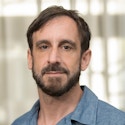
Kathryn Zurek, Ph.D.
California Institute of Technology
Kathryn Zurek is a particle theorist who specializes in theories of dark matter and new ideas for how one might detect it, either in terrestrial laboratories or through astrophysical observation. She is known for her proposal of Hidden Valley theories, which highlighted new experimental signatures at the Large Hadron Collider and opened the new paradigm of hidden-sector dark matter. Zurek also proposed the theory of asymmetric dark matter, which motivates a new class of experiments searching for light dark matter. Recently, she has explored a new direction in experimental signatures of quantum gravity.
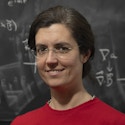
Jané Kondev, Ph.D.
Brandeis University
Jané Kondev uses the tools of theoretical physics to uncover laws that govern the inner workings of cells. His lab works on the regulation of gene expression, the packing of DNA in cells and the self-organization of the cytoskeleton. One of the major themes of the research is how genes specify geometry, such as the size of cytoskeletal structures or the shape of the cell’s genome. Kondev is the co-author of the book Physical Biology of the Cell, in which life is examined using simple physics models.
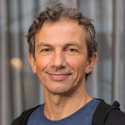
Brian Metzger, Ph.D.
Columbia University
Brian Metzger is a theoretical astrophysicist whose main interests lie in the births and deaths of compact objects. His work on neutron star mergers played an important role in interpreting the electromagnetic signal which accompanied the first merger detected via gravitational waves. As a result of this discovery, these rare events are believed to be among the main sources of the heaviest elements in the Universe. Metzger also works on supernovae, gamma-ray bursts, thermonuclear explosions on white dwarfs and the destruction of stars by massive black holes. He collaborates with astronomers to interpret these events using data across the electromagnetic spectrum.

Karin Öberg, Ph.D.
Harvard University
Karin Öberg studies the role of chemistry during planet formation. She combines theory, astronomical observations and experiments to explore the chemical environments within which planets assemble, the links between chemistry and dynamics in planet-forming disks and how the compositions of mature planets depends on the disk environment where they formed. Her models of planet compositions have provided an interpretive framework for the exoplanet community. Öberg’s work on the volatile and organic content of disks has begun to constrain how often we may expect to find planets with similar chemical starting conditions as those in our solar system.
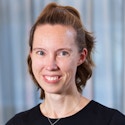
Venkat Guruswami, Ph.D.
Carnegie Mellon University
Venkatesan Guruswami's research has led to major advances in the theory of error-correcting codes, approximate optimization, pseudorandomness and related complexity-theoretic and mathematical aspects. His work on list decoding has yielded codes with minimum possible redundancy for correcting worst-case errors. His recent works include notable progress on polar codes, deletion-correcting codes, codes for cloud storage and constraint satisfaction problems.
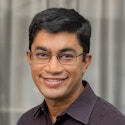
Omer Reingold, Ph.D.
Stanford University
Omer Reingold is the Rajeev Motwani professor of computer science at Stanford University. His research is in the foundations of computer science and most notably in computational complexity, cryptography and the societal impact of computation. Among his fundamental contributions are a small-memory deterministic graph walks, explicit constructions of lossless expander graphs, randomness extractors and pseudorandom functions, as well as establishing influential notions in the area of algorithmic fairness. He is an ACM Fellow, and among his distinctions are the 2005 Grace Murray Hopper Award and the 2009 Gödel Prize.
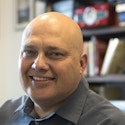
David Woodruff, Ph.D.
Carnegie Mellon University
David Woodruff works in the foundations of data science, specifically in data streams, machine learning, randomized numerical linear algebra, sketching and sparse recovery. One of his breakthroughs was the first randomized relative error approximation algorithms for least squares regression and low rank approximation that run in input sparsity time (i.e., time proportional to the number of non-zero entries in the input). His work on data streams includes the first optimal algorithms for approximately counting distinct elements, approximating the frequency moments and finding heavy hitters, as well as optimal lower bounds for the complexity of certain algorithms.
